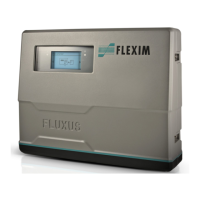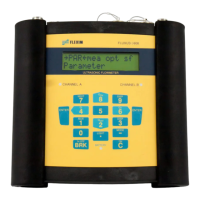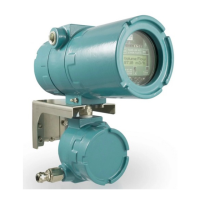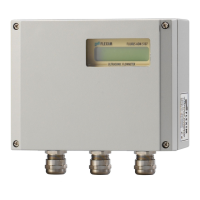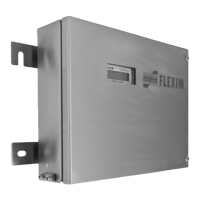FLUXUS F808, F809 5 Selection of the measuring point
20 UMFLUXUS_F808_8091V1-2-1EN, 2019-08-23
5 Selection of the measuring point
The correct selection of the measuring point is crucial for achieving reliable measurement results and a high measurement
accuracy.
A measurement on a pipe is possible if
• the ultrasound propagates with a sufficiently high amplitude (see section 5.1)
• the flow profile is fully developed (see section 5.2)
The correct selection of the measuring point and thus, the correct transducer positioning guarantees that the sound signal
will be received under optimum conditions and evaluated correctly.
Due to the variety of applications and the different factors that influence the measurement, there is no standard solution for
the transducer positioning. The correct position of the transducers is influenced by the following factors:
• diameter, material, lining, wall thickness and shape of the pipe
• fluid
• gas bubbles in the fluid
Avoid measuring points:
• in the vicinity of deformations and defects of the pipe and in the vicinity of welds
• with deposit formation in the pipe
Make sure that the pipe surface at the selected measuring point is even.
The ambient temperature at the measuring point has to be within the operating temperature range of the transducers (see
Technical specification).
Select the location of the transmitter within the cable range of the measuring point.
The ambient temperature at the location has to be within the operating temperature range of the transmitter (see Techni-
cal specification).
If the measuring point is within an explosive atmosphere, the danger zone and gases that may be present have to be de-
termined. The transducers and the transmitter have to be appropriate for these conditions.
5.1 Acoustic penetration
The pipe has to be acoustically penetrable at the measuring point. The acoustic penetration is reached when pipe and flu-
id do not attenuate the sound signal so strongly that it is completely absorbed before reaching the second transducer.
The attenuation in the pipe and in the fluid depends on:
• kinematic viscosity of the fluid
• proportion of gas bubbles and solids in the fluid
• deposits on the inner pipe wall
• pipe material
The following requirements have to be met at the measuring point:
• the pipe is always filled completely
• no material deposits in the pipe
• no bubbles accumulate
Attention! Observe the "Safety instructions for the use in explosive atmospheres" (see document SIFLUXUS,
SIFLUXUS_808_FM,SIFLUXUS_808_F2 and SIFLUXUS_1N62).
Note! Even bubble-free fluids can form gas bubbles when the fluid expands, e.g., before pumps and after
great cross-section extensions.
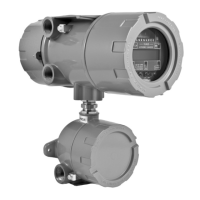
